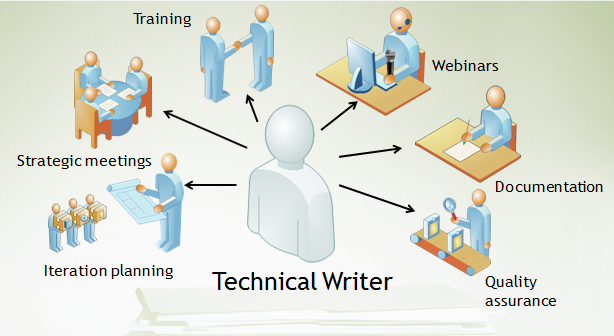A Technical Writer's Role in Development Methodologies
- By: Anthia Pun
- Nov 27, 2017
- 2 min read

There are two basic development methodologies that most companies utilize:
The Waterfall process (Sequential) or The Agile (Iterative) process. These basic models exist to ensure that project deliverables are met within a given time frame, to keep projects on track and progress towards completion. A technical writer’s role in a Waterfall or Agile development methodology is to produce documentation that coincides with company products, such as a given software.
A documentation plan with room for changes to accommodate the ever-changing list of priorities in project deliverables is recommended. First, a general understanding and planning of how to achieve final documentation will help a technical writer succeed in any work environment.
Documentation Development Process:
There is a general approach to developing supporting technical documentation for any company product:
1. Gather Information
Learn about the subject matter (the product) by reading existing product literature, specifications documents, engineering documentation
Use the product to gain an understanding of its purpose, services and user needs
Understand your audience and how they will go about using the product by conducting research and formulating a User and Task Analysis Report
Interview Subject Matter Experts (e.g. software engineers) to thoroughly understand how the product works
Listen attentively and take notes when attending all product training sessions and team meetings regarding an upcoming product launch
2. Plan and Organize the Information
Determine what the final deliverables are based on product user needs
Create a schedule for documentation completion with realistic and achievable milestones
Create a documentation plan
3. Start Writing
Create a rough outline of all topics to be covered in the documentation complete with second and third level headings to start organizing information in a logical manner
Start Writing and create placeholders for information or graphics that require further research for accuracy and inclusion in the documentation
4. Verify Your Work
Test your documentation to ensure it meets users’ needs
Proofread for logical flow of information and sensible visual presentation of documentation content
Ask for feedback and constructive criticism from Subject Matter Experts on what can be improved upon
5. Revise and Improve
Edit documentation for grammar and punctuation
Rewrite content in simple English to create clarity
Re-organize content to make it easier for users to find information
Send the revised documentation out for peer review or review by Subject Matter Experts Again to gain approval
Technical Documentation exists to be released and then maintained-constantly revised with updates including new product information. Realistically, developing documentation is a reiterative process where previous steps are almost guaranteed to be revisited.
Sources:
Laan, Krista Van, and JoAnn T. Hackos. The Insider's Guide to Technical Writing. O'Reilly, 2012.
“Technical Writer.” Writing User-Centered Documentation, or, My Best Days as a Technical Writer, I'd Rather Be Writing: Exploring Technical Writing Trends and Innovations, 21 June 2012, idratherbewriting.com/2012/06/21/writing-user-centered-documentation-or-my-best-days-as-a-technical-writer/.











Comentários